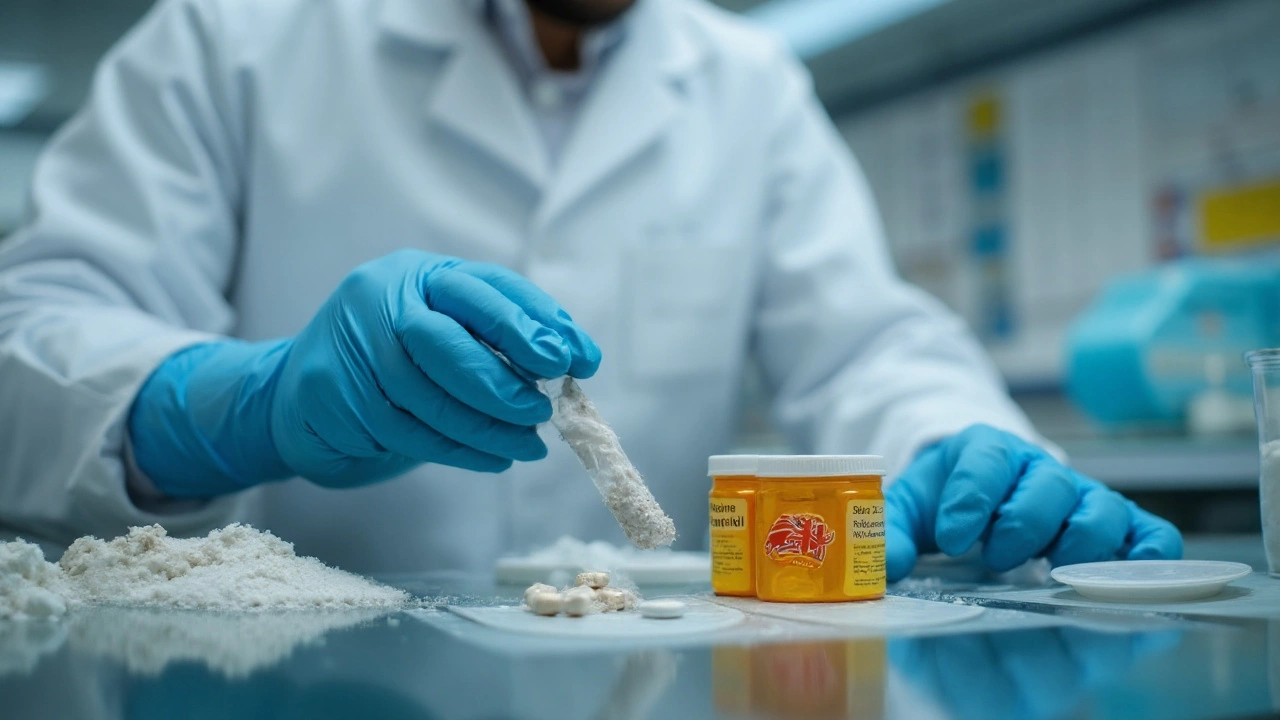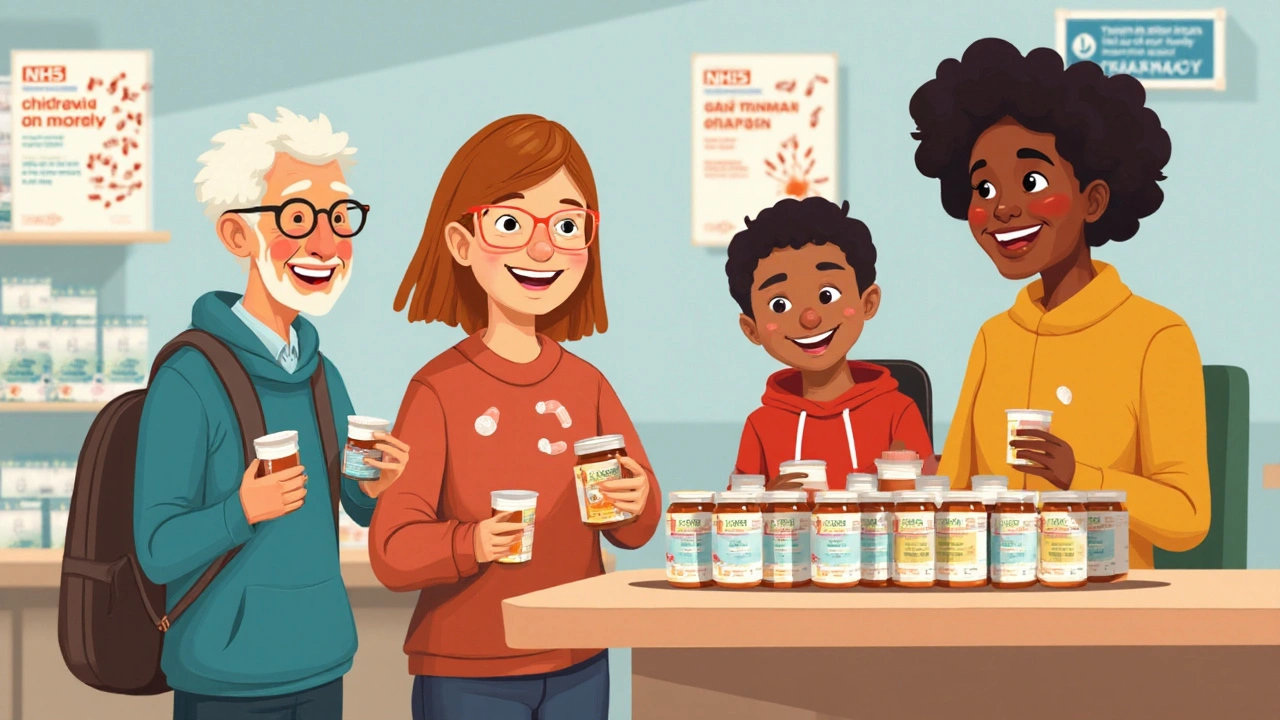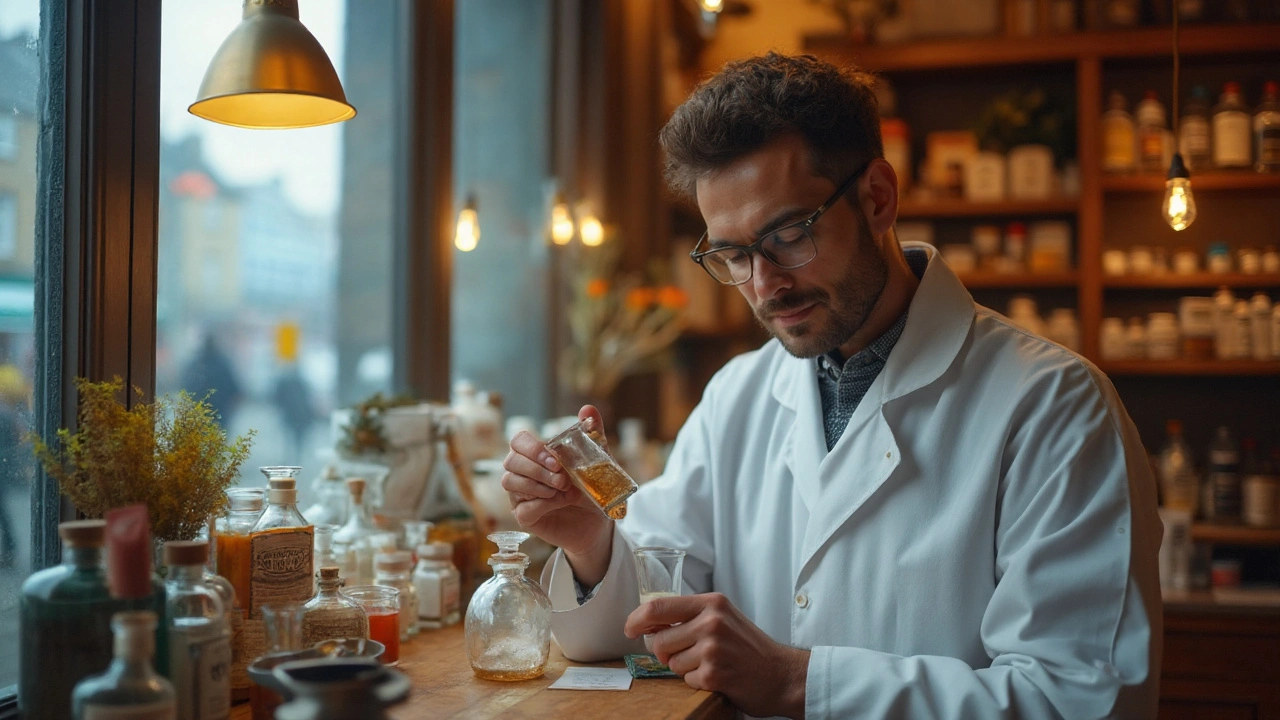Ever had a doctor’s prescription that just didn’t fit? Maybe your kid simply can’t swallow pills, or you’re allergic to a common filler in tablets. Sometimes, the dose you need isn’t even made anymore, or the flavor turns your stomach. That’s where compounding pharmacies step in—the quiet, behind-the-scenes experts turning standard medicine into personal solutions. This isn’t about selling magic potions; compounding is about science, safety, and a bit of creativity inside a pharmacy lab.
What Is a Compounding Pharmacy and How Does It Work?
Think about a pharmacy. You’re probably picturing shelves loaded with ready-made pills, bottles, and boxes from big pharmaceutical companies. A compounding pharmacy breaks that mold. Compounding is all about designing and mixing medications tailored exactly for a person’s unique needs—something mainstream drugstores rarely do. These pharmacies have licensed pharmacists who follow strict rules and use special equipment to blend, dissolve, or reformulate ingredients. Sometimes it’s a matter of making a pediatric syrup an adult can use, or vice versa. It’s a centuries-old practice that’s making a comeback, especially for folks who slip through the cracks of “one-size-fits-all” medicine.
Here’s a truth bomb: Before mass-produced medications hit the stage in the early 20th century, almost EVERY pharmacy was a compounding pharmacy. So, while it sounds high-tech now, compounding is actually the classic way medicines were made for generations. As mass-manufacturing took over, personal medicine faded—until people with special needs and rare conditions needed custom solutions again. In the U.S., the FDA allows compounding as long as it’s prescribed by a licensed doctor and prepared by a licensed pharmacist. There are some serious regulations here. Compounded drugs aren’t reviewed for safety or effectiveness like mass-produced ones, but the ingredients used do have to meet strict purity standards.
Let’s break it down with examples. Say your child needs a thyroid medicine, but the only available form is a pill that’s too strong. A compounding pharmacist can crush, dilute, and mix the drug into a lower-dose liquid that’s easier to swallow. Someone else may need a skin ointment with no parabens or artificial scents because of allergies. Or perhaps a flavorless medication just won’t fly with a pet—the pharmacist can add chicken flavor so your dog actually takes their heart meds.
But how does the process actually work? It all starts with a prescription. A doctor writes out exactly what’s needed: the medication, the dose, the format (maybe a gel, cream, or liquid), and anything to avoid due to allergies (like lactose or gluten). The compounding pharmacist then measures out precise amounts, using scales, mixers, molds, and sometimes even tiny capsules. They blend, test, and package the medicine, often in single-dose containers for accurate measuring at home. Everything is tracked, labeled, and usually made fresh for each patient.
Safety is huge here. The United States Pharmacopeia (USP) sets the quality bar, and state pharmacy boards keep watch. Reputable pharmacies stay far away from anything shady—no unapproved drugs, no miracle cancer cures, just safe customization using FDA-approved ingredients. You’ll sometimes hear about compounding in the news, often with controversy. In 2012, a Massachusetts compounding pharmacy caused a deadly meningitis outbreak through contaminated steroid shots. Since then, standards have tightened, and anyone looking for a compounding pharmacy should make sure their provider is accredited and follows modern best practices.

When Would You Need a Compounding Pharmacy?
Here’s the deal—most people can fill their prescriptions at a standard pharmacy without a blink. But the minute you hit a roadblock, a compounding pharmacist becomes your best friend. Some situations practically scream for these experts:
- Medication allergies or intolerances: Common commercial pills often use fillers, dyes, or preservatives that make some people sick. Compounding lets doctors and pharmacists cut out the extras, so the patient can get the drug without any unwanted extras.
- Unique dosages: Kids aren’t just miniature adults—they need different strengths, and sometimes the right dose just isn’t made. The same goes for elderly patients or those with chronic diseases who need a personalized medicine plan.
- Swallowing disorders: Children, seniors, and people with cancer or neurological disorders often have trouble swallowing. Pills can be turned into liquids, gels, or even lollipops to make things go down easier.
- Drug shortages: Sometimes, manufacturers stop making a medication altogether, usually because it’s not profitable. Compounding pharmacies can create hard-to-find treatments by sourcing the bulk ingredients and preparing them safely.
- Pet medicine: Compounding isn’t just for humans. Ever tried giving a cat a pill? Exactly. Pharmacists can make tuna- or chicken-flavored versions so pets actually take what they need. Vets lean on compounding for exotic animals, too, like birds and reptiles, who need very specific doses and formats.
- Hormone replacement therapy (HRT): Customized doses and formats—like creams or troches—are common for women looking for more natural or bio-identical hormone options.
- Pain management: Sometimes compounded creams, gels, or even sprays can deliver medicine right where it’s needed, reducing side effects or addiction risks from taking a pill.
It all depends on what your doctor recommends and what your body needs. But here’s a pro tip: not every regular pharmacy has the tools, training, or licenses for compounding. Always ask your doctor if they have someone trusted, or check with the Pharmacy Compounding Accreditation Board (PCAB) for pharmacies that are up to code and regularly inspected. And don’t be afraid to ask how a medicine is made—transparency is part of good care.
Still, it’s not just about individual needs. There are whole medical fields that lean on compounding more than you might think. Dermatologists, for example, may use compounded creams for eczema or rare skin diseases with very specific ingredients. Dentists sometimes use compounded gels for numbing or dry mouth. Pediatricians deal with rare disorders that have no commercial treatment. Even hospitals turn to compounding labs for IV solutions or niche cancer medications when supplies run out nationwide.
Some pharmacies go deep, offering “sterile compounding” for meds injected or used in the eye. These require next-level clean rooms, gowning, air filters—the works. It’s a complicated process, but absolutely essential for things like chemotherapy, IV antibiotics, or eye drops after surgery. Most local compounders stick to simpler meds, but bigger operations sometimes specialize in these high-risk products, following rules as strict as any pharmaceutical factory.
Insurance can be a wildcard, though. Some plans pay for compounded medicines if there’s a medical reason, but others are fussy about coverage. Always double check with your insurer and get detailed receipts. And remember: while custom meds can be more expensive (sometimes a lot more), the value is often life-changing—especially when nothing else works.

Safety, Legality, and Choosing the Right Compounding Pharmacy
Safety is the name of the game here. Your doctor and pharmacist should always follow a paper trail of prescriptions, ingredient sourcing, mixing, and delivery—all logged by law. The most reputable compounders are certified by organizations like PCAB or the National Association of Boards of Pharmacy (NABP), and they train their staff like a NASA flight crew. You want a pharmacy that can answer any question about your custom medication’s source, how it was made, and what they do to avoid contamination or mix-ups.
One thing to know—compounded drugs aren’t FDA-approved, and they skip much of the mass-market testing you’d expect from regular meds. That’s why people without special needs shouldn’t go out of their way to use compounded medicine. But if you or your loved one fits into one of those tricky spots—an allergy, a rare disease, or a child who needs something the big companies don’t make—the risks are often lower than the alternative. According to a 2023 report in JAMA, less than 1% of compounded prescriptions led to serious adverse events when made in licensed pharmacies following standard rules.
Finding a good compounding pharmacy isn’t complicated if you know what to look for. Here are some practical tips:
- Ask your doctor for referrals. Most healthcare providers have trusted pharmacies they use regularly.
- Search for PCAB- or NABP-accredited compounders near you. Accreditation proves they meet or beat national safety standards.
- Check if the pharmacy has experience making medicines like yours. Specialized techniques for eye drops, hormone creams, or pet meds require extra know-how.
- Be up-front with the pharmacist. Tell them about all allergies, preferences, and prescriptions you take. Honest conversations catch errors before they happen.
- Keep your doctor in the loop. Your prescriber should approve any change in your medication, even if it’s something as simple as switching pill brands.
Watch out for red flags: online pharmacies selling ‘compounded’ meds without a prescription, miracle cure promises, or ultra-low prices. Legit pharmacies put patient safety first, not profit. Some even offer tours of their lab (just through a window, to keep pesky bacteria out), and will walk you through every step of their process if you ask.
New technology is pushing compounding into fresh territory, too. 3D printing now lets pharmacists ‘print’ pills in specific shapes, strengths, or even with time-release features. Artificial intelligence can help spot risks and check recipes faster. Still, the heart of compounding is personal—the right drug, for the right person, at the right moment.
The catch? Compounding isn’t for everyone, and it’s not an excuse for dangerous do-it-yourself drugmaking. But when the medicine you need doesn’t exist off the shelf, a compounding pharmacy may be your safest, most effective bet. Ask questions, trust your healthcare team, and keep communication open. Personalized medicine isn’t a trend—it’s a real solution for people who need more than what comes in a box.


